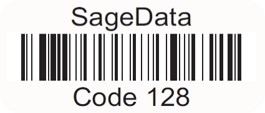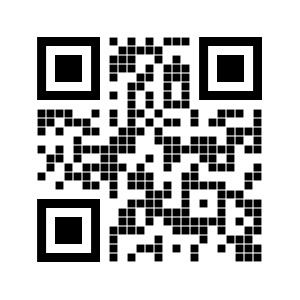How to choose
between 1D and 2D
Barcodes
SageData is based in Ottawa, Ontario, Canada
Use 1D, one dimension. 2D has some very specialized applications, but the majority of system designs are most effective with one dimension symbology.
What is a 1D barcode?

A 1D or one dimension barcode is the barcode most of us are familiar with from the supermarket or hardware store. A series of black vertical lines, generally on a white background. Information is encoded in the width of the black stripes and the white spaces between them.
What is a 2D barcode?

2D means two dimensional barcode. These were sometimes referred to as stacked barcodes when they were first introduced, and were simply a series of 1D barcodes printed and read one above the other. In time more sophisticated algorithms were introduced such that the barcode could carry a great deal of information. One version was known as a pdf - where pdf stood for portable data file. As the data density increased, redundancy was introduced, enabling readers to successfully decode damaged barcodes.
So 2D is better?
To some degree the 2D barcode is a solution to a problem that does not exist. SageData was enthusiastic about this when it was a new technology, and we were impressed by the claim that a 2D barcode could encode the Gettysburg Address - which it could. The market failure was that few clients or applications needed the Gettysburg Address in a barcode - there is usually just no practical need for a large amount of information to be stored in a barcode. In most systems the barcode provides a key to an entry in a database. The database can hold massive amounts of data, that can be accessed from anywhere, securely backed up, and instantly displayed on any device reading the barcode. So embedding a large volume of data directly into the barcode has limited application, limited practical benefit.
What are valid applications?
We have used 2D for the opposite reason that it was introduced. The original claim was that it could be used to put much more information in the same footprint. We used it to put the same information in a much smaller footprint. For one project we were asked to design a system capable of tracking one million nuclear dosimeters individually, with only a 4mm square footprint available to use. We were able to do this by using a 2D barcode to uniquely identify each item.
Conclusion
For most applications the 1D barcode works fine. The 2D option involves increased expense for little benefit.
The above brief description is intended to provide an introductory overview for those not already familiar with these systems. We are happy to answer any questions you may have about a specific application that you may be considering.
If you found this useful, you might also want to review:
- an introduction
to barcode technology
- pre-printed barcode labels
- barcode readers/scanners and printers
- 2D barcode labels
QAOK5356
